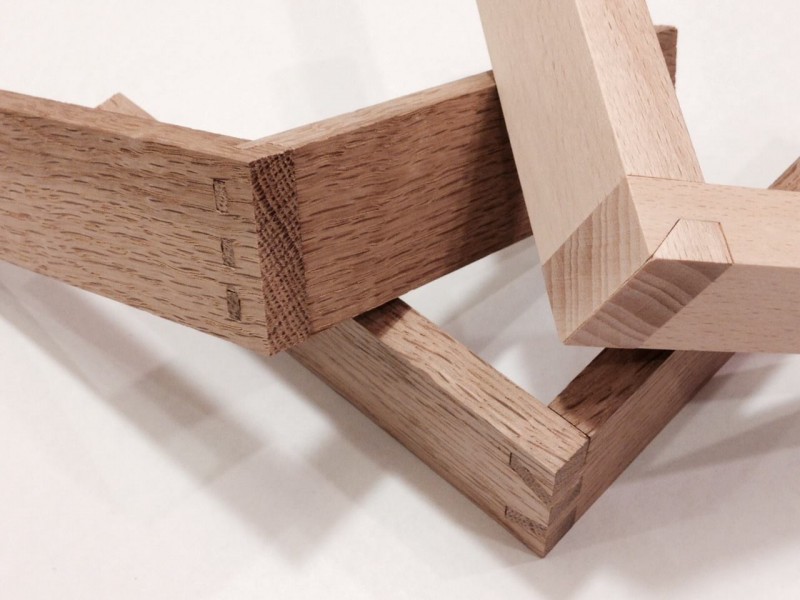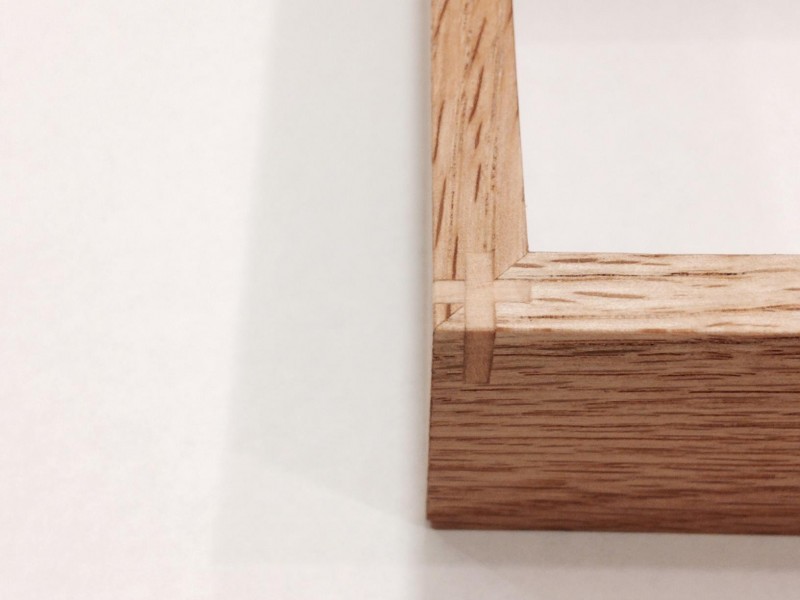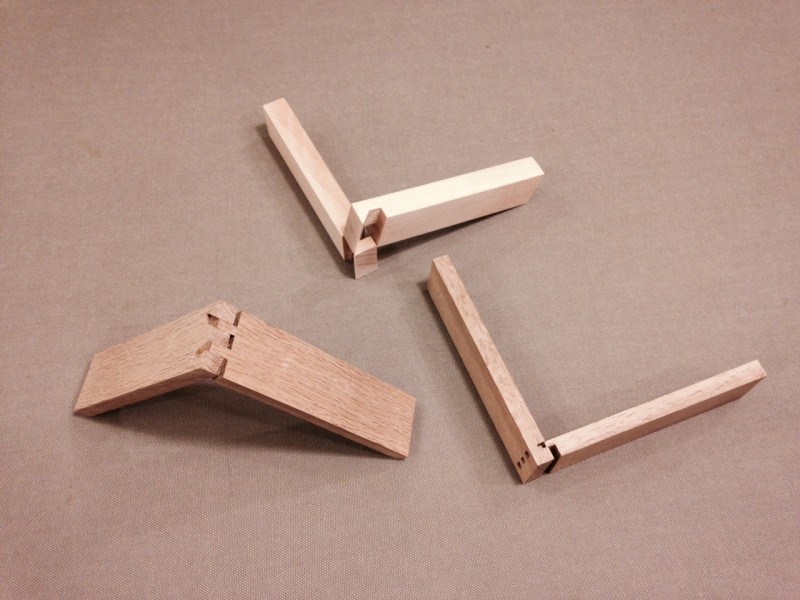




指物 / Woodworking Joints
指物とは、釘や接合する道具を使わずに、木の板を指し合わせて組み立てる木工技法で、この技法をつかった家具・箱・建具などの総称をいいます。
京指物・江戸指物など有名ですが、技術的な違いはあまりないようで、京指物は茶道具や高級家具など、身分の高い人々へ向けた、実用性よりも美術品のような美しさを重視したもの。
対して江戸指物は、大衆に向けた道具や家具で、華美な細工よりも、スッキリあっさりとしていて、隠れた部分に贅を凝らす江戸っ子趣味の美意識の中で技が磨かれたようです。
ホゾや継ぎ手を使うことで、構造のディテールが意匠として表に現れます。
ある意味、グラフィック的な要素にもなるかと!
細かな部分の美意識は日本人ならではの美徳。
指物を技術としてだけではなく、意匠として空間に表現するのはいかがでしょうか!
SASHI-MONO, woodworking joints, is the wood joining method without nails or any other joint tools, and also means the products in general, such as furniture, box, and interior fittings.
KYO-SASHI-MONO and EDO-SASHIMONO are famous. It is said that technically speaking, there is not much difference between them, but the difference is in the cultural background.
KYO-SASHIMONO has focused on beautifulness as an art than practical usage. Products are mainly tea-ceremony goods or high-class furniture for wealthy people. On the other hand, EDO-SASHIMONO has paid attention to the simpleness on the surface and the beautifulness and detail work on backside, that is alongside EDO people’s sense of beauty. Products are mainly ordinary tools or furniture for common people.
Using mortise and tenon joint or other various joint methods, the structural details come out and becomes an graphical expression.
Taking much account on the detailed parts is unique sense of beauty in Japan.
Why don’t you apply SASHI-MONO as not only structural technique, but also as an artistic graphical pattern?





